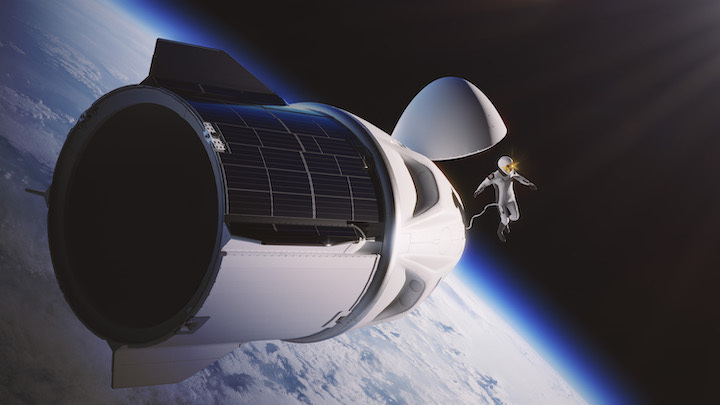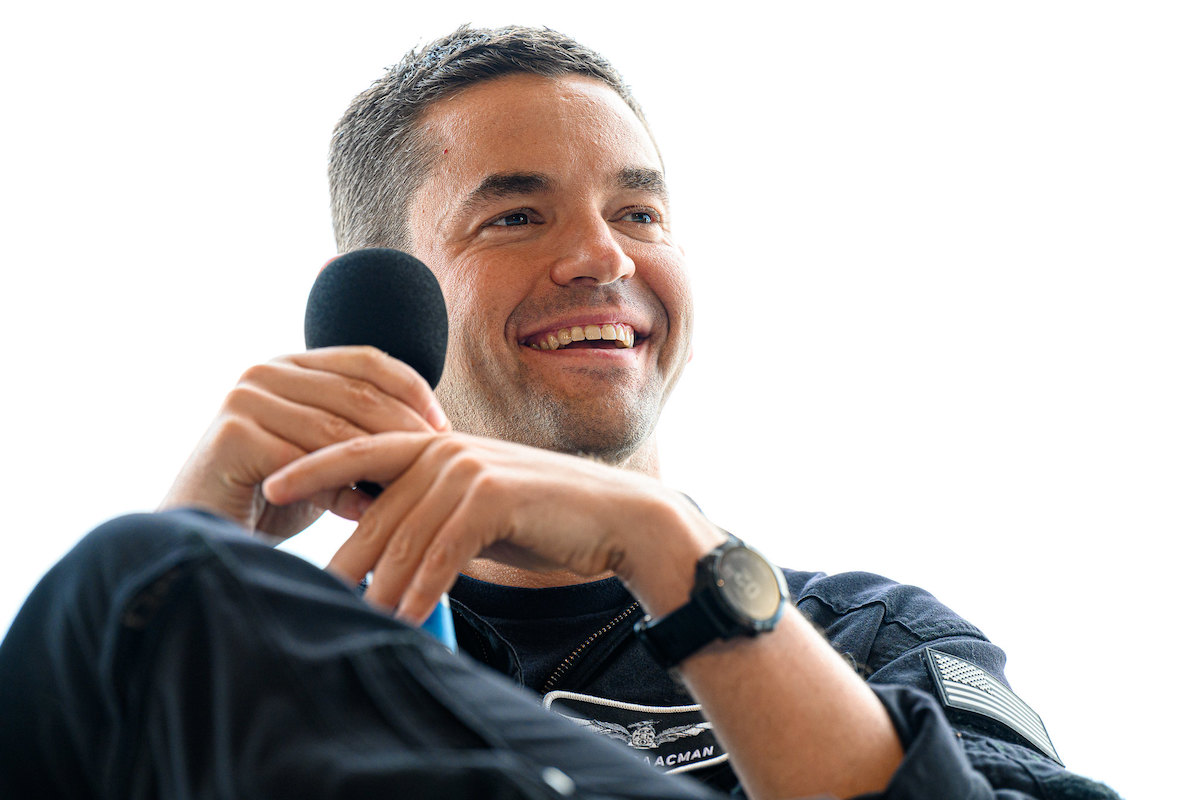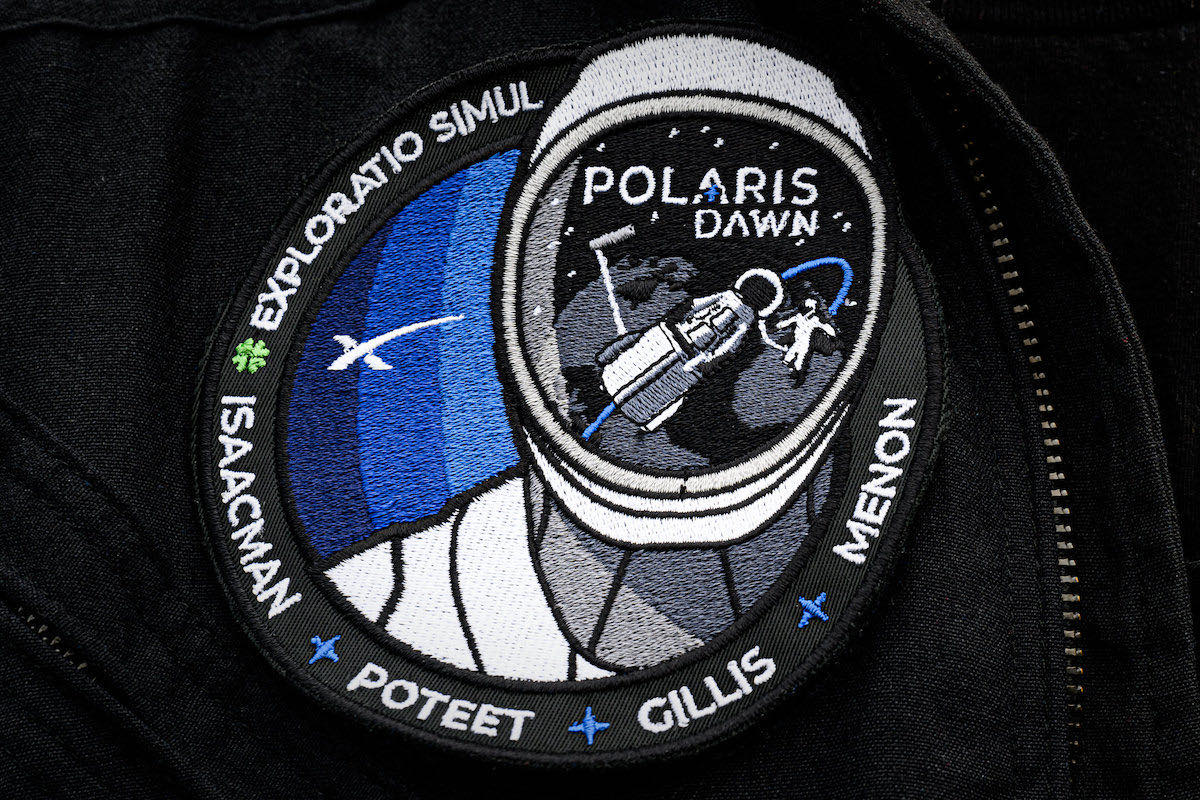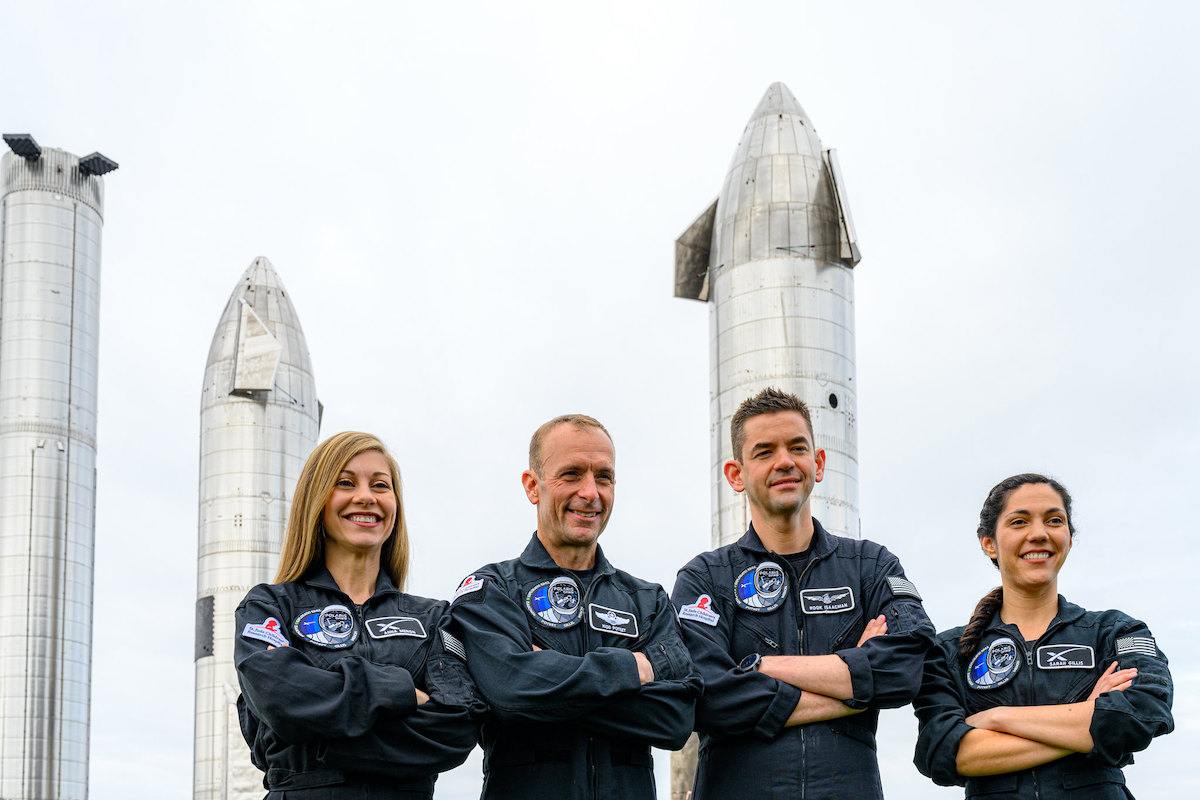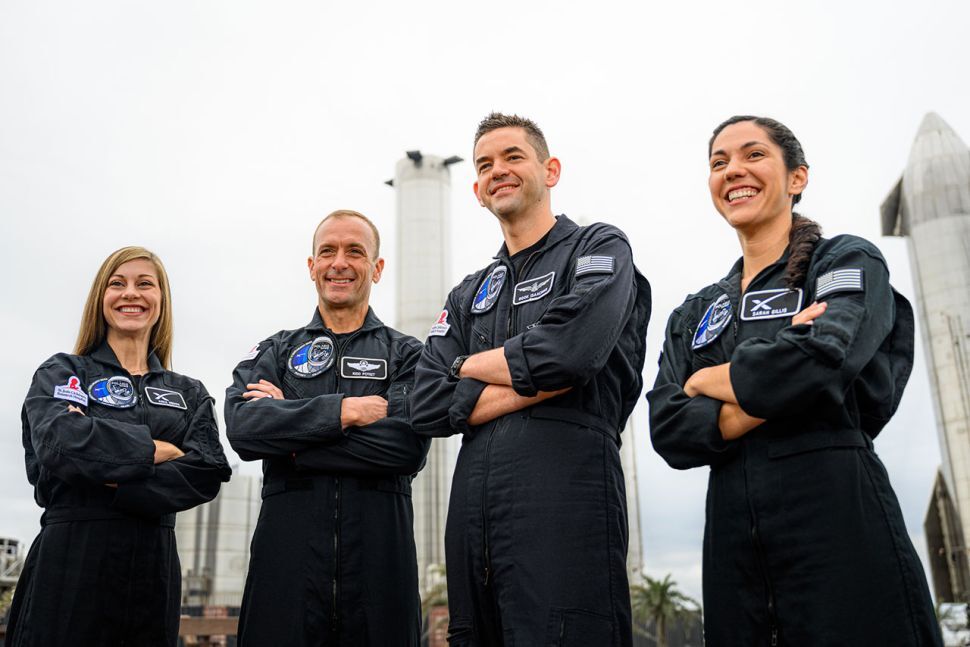14.02.2022
Billionaire astronaut Jared Isaacman buys more private SpaceX flights, including one on Starship
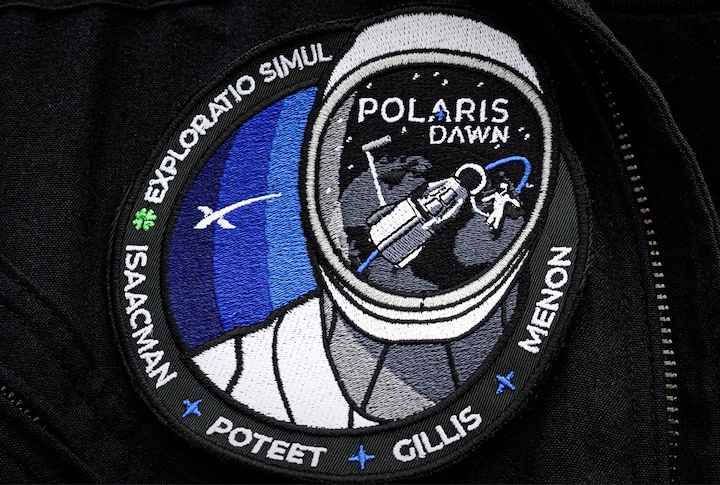
he Polaris Dawn mission patch depicts a spacewalking astronaut outside of SpaceX's Dragon spacecraft as reflected in the spacesuit visor of another crew member. (Polaris Program/John Kraus)
- Jared Isaacman, the billionaire founder of payments company Shift4, has purchased as many as three more flights from Elon Musk’s SpaceX for what is known as the Polaris Program.
- The first mission, called Polaris Dawn, is scheduled to launch a four-person crew led by Isaacman in the fourth quarter with the company’s Falcon 9 rocket and Crew Dragon spacecraft.
- Polaris Dawn is the inaugural of up to three planned missions, with the final one to be the first crewed spaceflight of SpaceX’s Starship rocket.

Jared Isaacman, the billionaire founder of payments company Shift4 who flew on the first private SpaceX flight to orbit last year, has purchased as many as three more flights from Elon Musk’s company.
The first mission in the so-called Polaris Program is set to launch a four-person crew led by Isaacman in the fourth quarter with the company’s Falcon 9 rocket and Crew Dragon spacecraft. According to the program’s website, the augural flight, Polaris Dawn, will be the first of up to three missions, with the final one to be the first crewed spaceflight of SpaceX’s Starship rocket.
“The Polaris Program is an important step in advancing human space exploration while helping to solve problems through the use of innovative technology here on Earth,” Isaacman said in a statement.
Financial terms of the billionaire’s purchase from SpaceX were not disclosed.
Isaacman was among those who were at Musk’s Starship presentation last week at the company’s facility in Texas. SpaceX has booked a private Starship flight to the moon for Japanese billionaire Yusaku Maezawa, and Musk on Thursday alluded that more such spaceflights were in the works but didn’t offer any specific details.
The Polaris Dawn mission will spend up to five days in orbit and is looking to achieve such goals as the first private-company spacewalk with SpaceX spacesuits, testing of Starlink satellite communications in space and conducting scientific research on human health.
Notably, Polaris Dawn marks the start of SpaceX’s own astronaut corps. Isaacman, the mission’s commander, will be joined by longtime colleague Scott Poteet as the pilot. Two SpaceX employees, Sarah Gillis and Anna Menon, the company’s lead space operations engineers, round out the crew. Gillis oversees the astronaut-training program and Menon manages the development of its crew operations.
Isaacman led the historic Inspiration4 mission in September, which spent three days in orbit in SpaceX’s Crew Dragon capsule with a crew of four. The primary goal of Inspiration4 was to raise $200 million for St. Jude Children’s Research Hospital; it surpassed that goal and donated over $240 million to the charity. Like Inspiration4, the Polaris missions will “raise funds and awareness” for St. Jude, according to the program’s website.
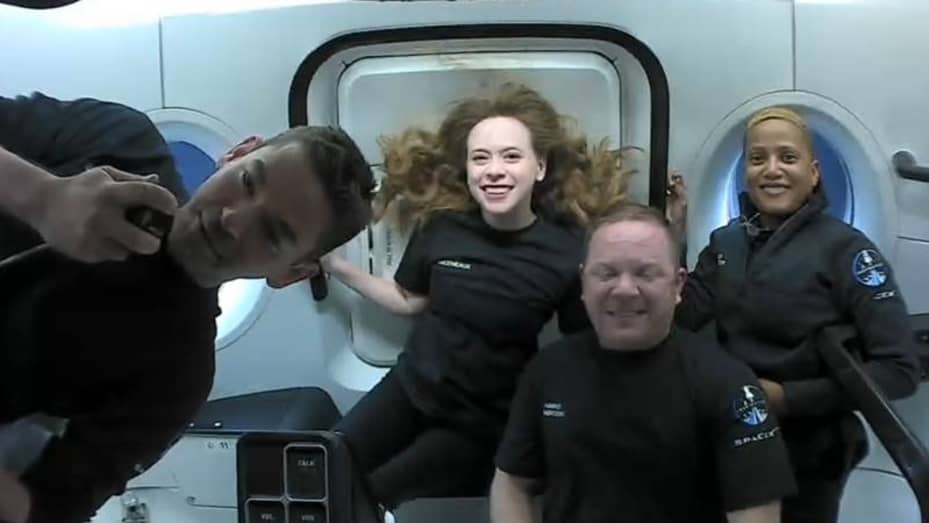
The program is also collaborating with multiple organizations, including the Translational Research Institute for Space Health (TRISH), BioServe Space Technologies at the University of Colorado Boulder, Space Technologies Lab at Embry-Riddle Aeronautical University, Weill Cornell Medicine, Johns Hopkins University Applied Physics Laboratory, the Pacific Northwest National Laboratory and the U.S. Air Force Academy.
Quelle: CNBC
+++
Billionaire's 'Polaris Program' to fly feats on SpaceX Dragon, Starship
The billionaire commander of the first "all-civilian" space mission has now filed a new flight plan, underwriting a series of three SpaceX launches designed to rapidly advance human spaceflight capabilities while also raising funds and awareness for causes here on Earth.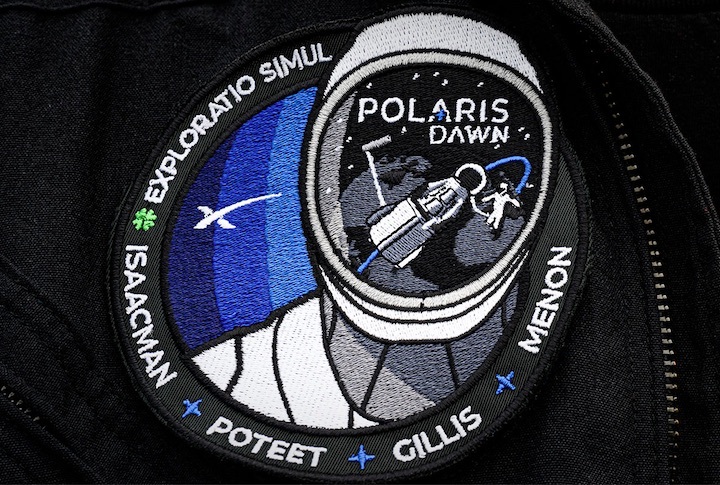
he Polaris Dawn mission patch depicts a spacewalking astronaut outside of SpaceX's Dragon spacecraft as reflected in the spacesuit visor of another crew member. (Polaris Program/John Kraus)
Jared Isaacman, the 39-year-old founder of Shift4, an online payment processing company, and the commander of last year's Inspiration4 mission, revealed his "Polaris Program" on Monday (Feb. 14), a trio of commercial spaceflights to begin on SpaceX's existing Dragon spacecraft as soon as November or December of this year and culminate in the first crewed launch of SpaceX's new Starship in the years to come.
"The Polaris Program is the next chapter in our journey to make humanity become a truly spacefaring civilization," Isaacman said in a call with reporters on Monday.
The program's first launch, titled "Polaris Dawn," will launch Isaacman as the mission's commander, together with three crewmates, including: pilot Scott "Kidd" Poteet, a retired lieutenant colonel in the U.S. Air Force who served as the mission director for Inspiration4; mission specialist Sarah Gillis, who oversees SpaceX's astronaut training program; and medical officer Anna Menon, who manages the development of SpaceX's crew operations and serves in the company's mission control. (Menon is married to Anil Menon, a member of NASA's latest astronaut candidate class, meaning she will now be flying into space before her husband.)
Polaris Dawn
The Polaris Dawn crew will expand upon the achievements of the record-setting Inspiration4 mission. In September 2021, Isaacman and his three Inspiration4 crewmates (Sian Proctor, Hayley Arceneaux and Chris Sembroski) spent three days aboard a Dragon spacecraft in Earth orbit, reaching a maximum altitude of 364 miles (565 km) — the fifth-highest orbital human spaceflight in history.
"On Polaris Dawn, we endeavor to achieve the highest Earth orbit ever flown," Isaacman said.
That record is currently set at 853 miles (1,373 km), as achieved by NASA's Gemini 11 astronauts, Charles "Pete" Conrad and Richard "Dick" Gordon, in 1966. Apollo crew members, including Conrad and Gordon, later flew farther from Earth on missions to the moon, but the Gemini 11 record continues to stand today as the highest Earth orbit reached by astronauts.
"Ultimately, it will really come down to vehicle performance and what we're able to accomplish while ensuring that we have a path to come home safely," said Gillis.
At its peak altitudes, the Polaris Dawn mission will pass through portions of the Van Allen radiation belt — the donut-shaped swaths of magnetically-trapped, highly-energetic charged particles that surround Earth — providing the crew the opportunity to collect data on the effects of space radiation exposure on human health as among the mission's science research objectives.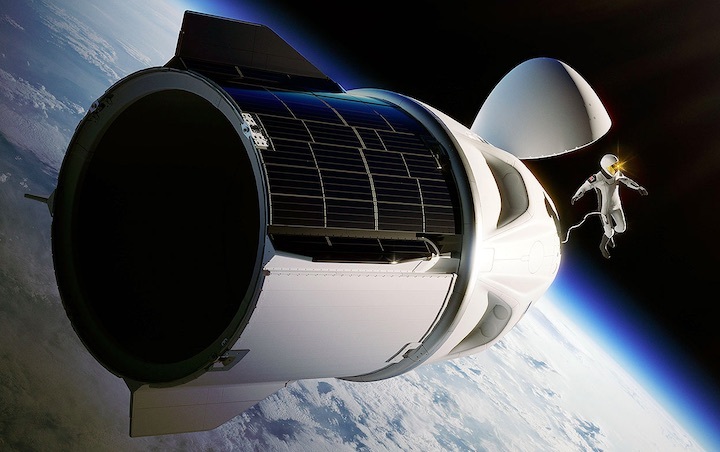
The first commercial spacewalk is planned for the first mission of billionaire Jared Isaacman's newly-announced "Polaris Program," dubbed "Polaris Dawn," to be launched with a crew of four as soon as November or December 2022. (Polaris Program)
Lower in their orbit, at approximately 300 miles (500 km) above Earth, at least two of the Polaris Dawn crew members will attempt the first commercial extravehicular activity (EVA), or spacewalk. SpaceX's Dragon does not include an airlock, so the entire cabin will be depressurized before the hatch is opened. For the EVA, the crew will wear new SpaceX-designed spacesuits, upgraded from the company's existing pressure suits.
"The development of these suits and the execution of the EVA will be important steps toward the scalable design for spacesuits for future long duration missions," Isaacman said.
Guiding light
The new spacesuits, along with a planned first test of SpaceX's Starlink satellite network for laser-based communications in space, are intended to advance the technologies needed for future missions to the moon, Mars and into deep space. Like its namesake Polaris, which is a constellation of three stars more commonly known as the "North Star," the Polaris Program seeks to be a guiding light, helping humanity navigate its way to new destinations.
The second Polaris mission will follow based on what the crew and SpaceX learn during the first mission.
"We're going to learn as much as we can from the Polaris Program side of things, SpaceX is going to learn an awful lot as they're getting Starship ready for its first human spaceflight and I think we're going to combine that to ultimately form what the second mission should look like," Isaacman said.
The third launch will be the first human spaceflight of SpaceX's Starship, a heavy-lift rocket and spacecraft that is being developed as the world's first fully-reusable transportation system designed to carry both crew and cargo into Earth orbit, to the moon, Mars and elsewhere further out into the solar system. The date for that mission is unknown, but will come after the vehicle has been tested on numerous uncrewed flights.
Like the Inspiration4 mission, which through contests, auctions, sales and donations raised a total of $240 million for St. Jude Children's Research Hospital, the Polaris Program also seeks to benefit the hospital's programs to to improve the global survival rates for childhood cancer.
"I'm incredibly passionate that we can make meaningful progress towards a world we all want to live in for tomorrow, while also working to address the challenges and hardships of today. It does not have to be one or the other, but in fact can be both," said Isaacman.
Quelle: CS
----
Update: 16.02.2022
.
Jared Isaacman orders three more SpaceX launches, including first crewed Starship
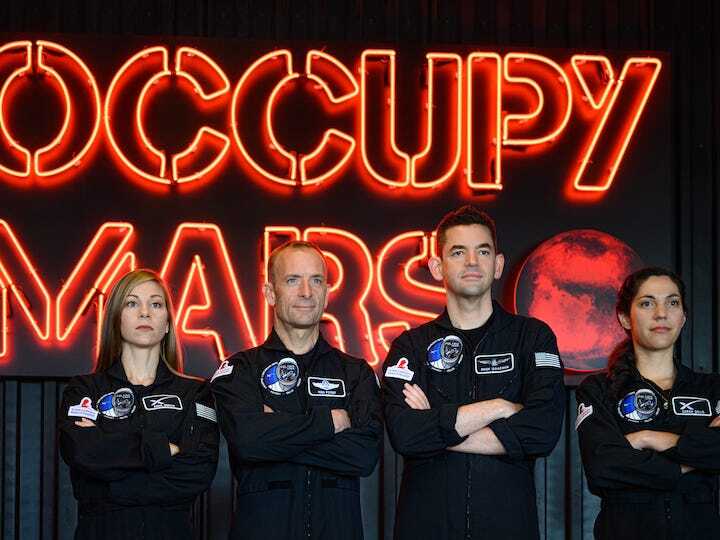
The billionaire entrepreneur who flew SpaceX's first all-civilian mission to orbit last year has commissioned the company for three more missions, including the first crewed flight of Starship.
Jared Isaacman is working with SpaceX on the Polaris Program, named after the North Star, that more or less operates as a private crewed spaceflight program. Polaris' first two missions are slated to fly on Crew Dragon capsules starting late this year followed by a third on Starship, the SpaceX vehicle that will eventually take humans to the moon and Mars.
Included in the program so far are Isaacman (commander) and three astronauts-to-be: Sarah Gillis and Anna Menon, both engineers at SpaceX; and Scott Poteet, a former Air Force pilot and mission director for Isaacman's Inspiration4 mission last September. Gillis and Menon join as mission specialists and Poteet as a pilot.
The first mission, set to launch from Kennedy Space Center no earlier than the fourth quarter of this year, is Polaris Dawn: a Falcon 9 rocket will boost the crew of four to push the altitude limits of Crew Dragon, conduct the first ever commercial spacewalk, work on health and science experiments, and test SpaceX's Starlink internet network's ability to relay communications.
"The Polaris Program is an important step in advancing human space exploration while helping to solve problems through the use of innovative technology here on Earth," Isaacman said in a Monday release. "On Polaris Dawn, we endeavor to achieve the highest Earth orbit ever flown in addition to conducting the world’s first commercial spacewalk and testing of Starlink laser-based communication."
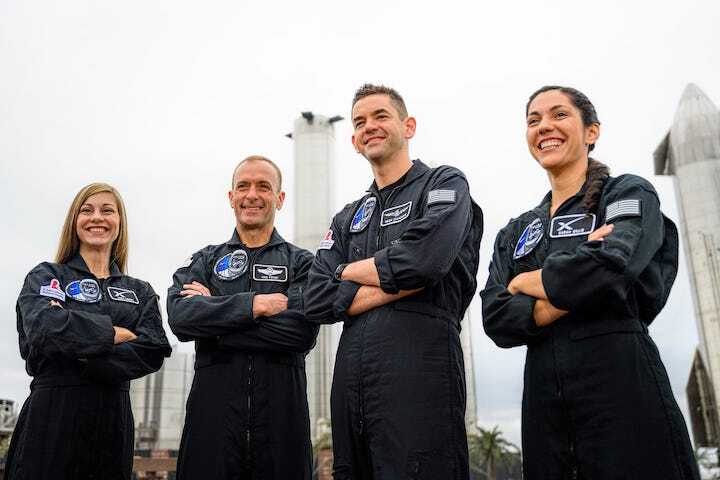
Polaris Program astronauts from left to right: Anna Menon, Scott Poteet, Jared Isaacman, and Sarah Gillis.
Because it includes a spacewalk, Polaris Dawn will be the first time SpaceX demonstrates its extravehicular activity, or EVA, suit. Spacesuits are a challenging area of engineering as their complexity often rivals that of the main spacecraft itself – even NASA's own suitsfor the moon-focused Artemis program are one of the reasons behind schedule delays.
"There's a fantastic team of brilliant engineers working on this spacesuit and it'll be really exciting to work together," Menon told FLORIDA TODAY during a Monday teleconference with reporters. "As their design unfolds, we'll be certain to share more details as we get to that point."
Isaacman echoed Menon's comments and said widely available, effective EVA suits are critical to the future of spaceflight, especially as eyes turn to the moon and Mars. Testing the suits are a critical mission objective for the first Polaris mission, he said.
Because Crew Dragon doesn’t have a dedicated airlock, all four crew members will need to don their pressurized suits as air is evacuated from the capsule. It was not immediately clear which of the four would actually exit the capsule for the spacewalk.
Polaris' second mission will also fly Crew Dragon but the third will mark the first crewed flight of Starship, SpaceX's next-generation rocket being prototyped in Texas. Elon Musk sees Starship as the system that will take humans to the moon and Mars, deploy larger payloads, and bring down costs.
The Starship mission could fly from either Texas or KSC since SpaceX has plans to use both locations for the massive rocket, but details are not yet available. More on Polaris' second and third missions are expected later this year.
On a call with reporters Monday, Isaacman said the program is fully funded thanks to contributions from himself and SpaceX. Costs and other financial details were not released.
In September, Isaacman and three others – Hayley Arceneaux, Sian Proctor, and Chris Sembroski – launched from KSC on Inspiration4, the first mission crewed entirely by non-professional astronauts. It raised more than $240 million for St. Jude Children's Research Hospital in Memphis, Tennessee.
Polaris will continue the focus on St. Jude through awareness and fundraising campaigns.
Isaacman is the founder and CEO of Shift4, a publicly-traded payments processing company he founded when he was 18.
Quelle: Florida Today
----
Update: 22.02.2022
.
The science experiments to expect from SpaceX's Polaris Dawn

SpaceX Crew Dragon spacecraft above Earth in 2021. Credit: SpaceX
The next private SpaceX flight will conduct novel science experiments in space.
Why it matters: The research may help to answer key questions about how humans fare during long periods in space and how to protect them in a future where more people could spend more time off the Earth.
- "We want to utilize every second possible to benefit our overall goal to advance space exploration and make it accessible for all," mission pilot Scott Poteet says.
Details: Polaris Dawn, the first of three planned flights, is scheduled to launch later this year, carry billionaire Jared Isaacman, who is helping to finance the flights, and three other people to space.
- In the planned five-day flight — which would go to the radiation intense region called the Van Allen belt and potentially to an orbit farther from Earth than any since the last lunar missions — the crew will collect data about the health effects of radiation, which increases the risk of cancer and other diseases.
- They also plan to test the laser-based communication system for SpaceX's Starlink satellites, which aim to provide internet access to countries without connectivity, for use in space communication systems for lunar and Martian missions.
- SpaceX's spacesuit designed to offer protection from radiation and other space elements will also be tested during a spacewalk.
- The team is fielding an ever-growing list of proposed science experiments from other researchers. They'll be "prioritizing any experiments that have a direct benefit for human health on Earth and in space," Isaacman says.
Another experiment they are seeking approval for would study the effects of microgravity on pressure in the brain during long space flights. An increase in intracranial pressure can cause vision impairment, headaches and other effects seen in many astronauts.
- Studying what's known as spaceflight associated neuro-ocular syndrome (SANS) could involve implanting a transducer in a crew member's brain that connects to a catheter in the spinal cord to measure fluid pressure before, during and after the mission.
What to watch: The SpaceX Dragon capsule and Falcon 9 rocket that will be used for Polaris Dawn flew to an altitude of about 360 miles during last year's Inspiration4 mission, the first all-civilian crew mission that was also led by Isaacman.
- Isaacman indicated Polaris Dawn will go further from Earth, raising the question of whether SpaceX will need to complete additional testing before the mission, CNN's Jackie Wattle notes.
Quelle: AXIOS
----
Update: 10.03.2022
.
Ukrainian flag will launch on SpaceX rocket with Polaris Dawn crew this year


